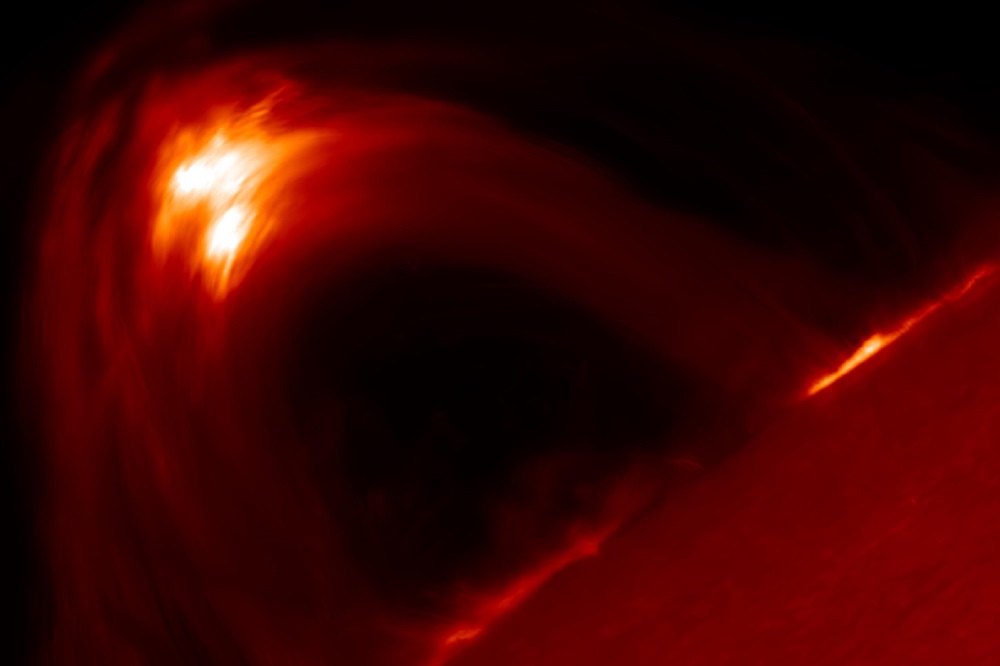Origins of space weather to be explored by Aberystwyth academic

An academic from Aberystwyth University is set to explore the magnetic field of the sun in a bid to understand freak space weather events.
Using the world’s most powerful solar telescope Dr David Kuridze, Research Fellow at the Department of Physics, will measure the magnetic field at the outer limits of the Sun.
The £400k research project, funded by a grant from the Science and Technology Facilities Council, will explore the origins of highly disruptive solar flares, eruptions or coronal loops, the bright magnetic curves that appear as arcs forming above the Sun’s surface.
Considered by academics as one of the most mysterious and important phenomena of modern astrophysics, the events called ‘coronal mass-ejections’ produce energy which can cause massive levels of disruption, especially during serious bouts of space weather.
In 1989, six million people in Quebec were left without power because of the effects of a solar storm. Freak space weather events can also disrupt satellite and radio communications, GPS, and can cause radiation poisoning in humans, especially those who are in space.
However, predicting space weather is extremely difficult because it requires detailed measurement of the solar atmosphere which, despite its size, gives off very little light, and its magnetic field which is extremely weak.
Violent disturbances
The University says that Dr Kuridze has been awarded observing time on the Daniel K. Inouye Solar Telescope (DKIST) in Hawaii which is the most powerful solar telescope in the world.
With a four-metre diameter, which is more than twice the size of the diameter of more conventional hardware, the DKIST can collect seven times more sunlight than any other solar telescope.
By collecting, processing and analysing the data Dr Kuridze will be able to discover the magnetic field strength in the solar atmosphere that causes freakish space weather events, how much energy it contains and how it is generated and dissipated. This data can then be used to build further tools for measuring the magnetic field.
The project is one of two currently underway at the University which is working alongside other institutions to develop an early warning system for solar storms for the UK Met Office.
Dr Kuridze said: “It is ever present above us but there is still so much we do not know about the Sun. Space weather is just one of these areas and is such a vital one to explore because the economic consequences of severe events are enormous.
“Large solar storms and violent disturbances in the near-Earth environment pose huge risks for society and our anthroposphere. It is vital that its negative impact is reduced through accurate prediction.
“The data that we will be able to tap into thanks to the power of the Daniel K. Inouye Solar Telescope means we will have insight like never before into the causes of space weather events. This project directly addresses the huge gap in our knowledge of our nearest star.”
Support our Nation today
For the price of a cup of coffee a month you can help us create an independent, not-for-profit, national news service for the people of Wales, by the people of Wales.





Maybe ‘Dark Sky’ Wales could have its own Solar Telescope…now the space station is likely to be manned by Russian, Indian and Chinese personnel there will be less urgency in the West, unless Trump gets back in and a weather forecast would be essential for his Space Force…being light-hearted before you all pile in
We’ve got three top quality Physics dept’s in Wales’ Universities. Very proud to have graduated from one of them.